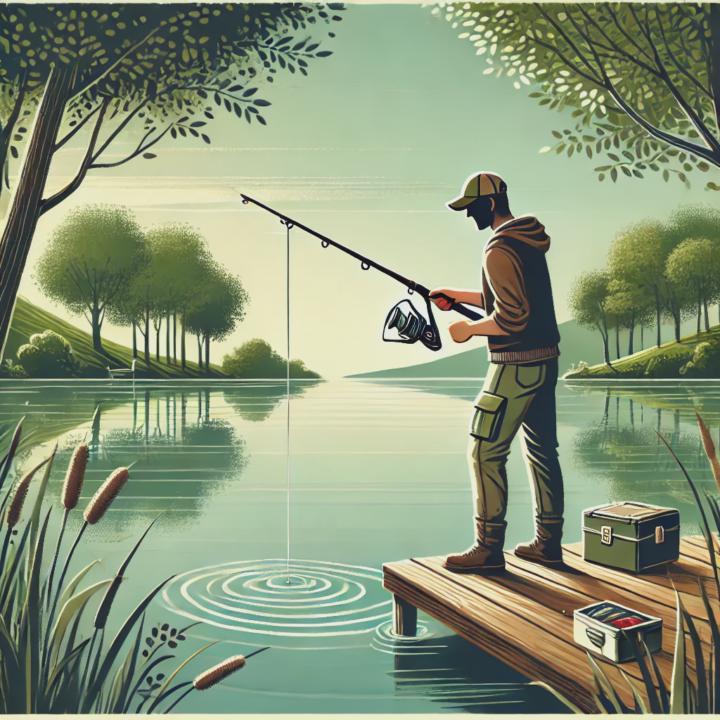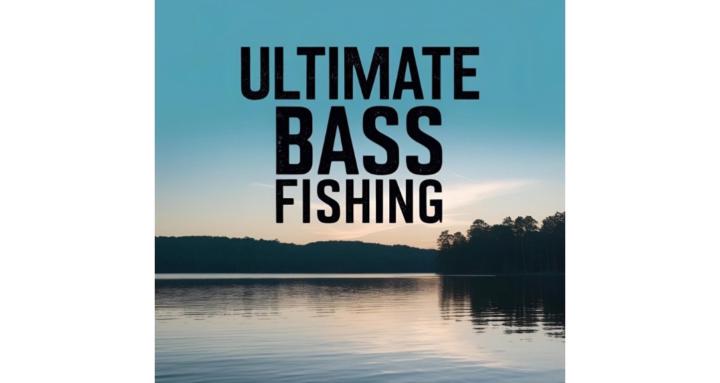
Write something
OUR VISION 🚀
[IMPORTANT READ] Welcome to Ultimate Bass Fishing, the ultimate community for bass fishing enthusiasts! 🎣🔥 Together, we’re building a tight-knit group of anglers who share knowledge, strategies, and epic fishing stories. Whether you’re here to learn, compete, or just connect, this is your home! 💡 Our Mission: 🏆 Help members improve their bass fishing skills 🎣 Share real-world experiences & strategies 📊 Keep up with the latest gear & tackle 🚀 Build a supportive, thriving community 🌟 What You’ll Get Here: 🔥 Expert advice from top anglers 📸 Weekly challenges & bragging rights 🎥 Video tips, live streams & Q&As 🏅 A place to showcase your personal best catches Your Fellow Fish Junky, - Chase
Where’s the Best Bass Spot? 🌎
Without giving away your secret spot, what’s the best state or lake you’ve fished for bass? 📍 Let’s build the ultimate bass bucket list!
Best Lure for Bass? 🎯
If you could only fish with ONE lure for the rest of your life, what would it be and why? 🧐 Let’s settle this debate once and for all! Comment below👇👇👇
Bass Fishing for Beginners: Essential Tips to Get Started
Bass fishing stands as one of the most popular and accessible forms of angling across North America. Whether you're casting into a local pond or navigating expansive reservoirs, understanding the fundamentals can significantly enhance your success. Here's a comprehensive guide to get you started on your bass fishing journey. Understanding Bass Species The two primary species targeted by anglers are the largemouth bass (Micropterus salmoides) and the smallmouth bass (Micropterus dolomieu). - Largemouth Bass: Characterized by their greenish hue and a distinct horizontal stripe along their bodies, largemouths have jaws that extend beyond the eye. They thrive in warmer, vegetated waters such as lakes, ponds, and slow-moving rivers. - Smallmouth Bass: Known for their brownish coloration and vertical bars, smallmouths possess jaws that align with the middle of the eye. They prefer cooler, clearer waters, often inhabiting rocky rivers and lakes. Ideal Habitats Bass are adaptive and can be found in diverse environments. They often associate with structures that offer cover and feeding opportunities: - Vegetation: Aquatic plants provide shelter and abundant prey. - Submerged Structures: Items like fallen trees, stumps, and rock formations offer hiding spots and ambush points. - Man-made Structures: Docks, piers, and submerged debris can attract bass due to the shade and protection they offer. Diet and Feeding Behavior Bass are opportunistic predators with a varied diet: - Largemouth Bass: They consume a wide range of prey, including fish (like shad and bluegill), amphibians, insects, and even small mammals or birds. - Smallmouth Bass: Their diet primarily consists of crayfish, smaller fish, and insects. Understanding their feeding habits is crucial, as it influences lure selection and fishing strategies. Essential Gear for Beginners Starting with the right equipment can make your bass fishing experience more enjoyable: - Rod and Reel: A medium-action spinning or baitcasting rod paired with a compatible reel is versatile for various techniques. - Line: Monofilament or fluorocarbon lines ranging from 8 to 15-pound test are suitable for most bass fishing scenarios. - Lures: Stock a selection that includes:

Spring Bass Fishing: Mastering Seasonal Tactics for Bigger Catches
Spring is a pivotal season for bass anglers, as warming waters invigorate bass activity, offering prime opportunities to land impressive catches. To maximize success during this period, it's essential to understand bass behavior, select appropriate tackle, and employ effective techniques. Understanding Spring Bass Behavior As water temperatures rise in spring, bass transition from deep winter refuges to shallower areas in preparation for spawning. They often seek out hard structures like wood or rock that absorb and retain heat, attracting prey such as crayfish. Targeting these structures can significantly increase your chances of locating active bass. Essential Tackle for Spring Bass Fishing Selecting the right tackle is crucial for adapting to the dynamic conditions of spring bass fishing. Consider incorporating the following into your arsenal: - Jigs: Ideal for mimicking crayfish, jigs can be worked slowly through structures, appealing to bass in various activity levels. Opt for natural colors like brown or green pumpkin to match local forage. - Suspending Jerkbaits: These lures are effective during early spring, especially when bass are sluggish. Their erratic action and ability to pause in the strike zone can trigger reaction bites. - Lipless Crankbaits: Versatile and efficient for covering water, lipless crankbaits can be retrieved at varying speeds to locate active bass. Their tight wobble and noise can provoke strikes from both aggressive and neutral fish. Effective Techniques for Spring Bass Fishing Implementing the right techniques can make a significant difference in your spring bass fishing success: - Slow Presentation: In cooler water temperatures, bass metabolism is slower, making a slow and deliberate presentation more enticing. Techniques like dragging a jig or slowly retrieving a jerkbait can be particularly effective. - Targeting Warming Pockets: Areas protected from north winds that receive ample sunlight tend to warm up faster, attracting bass. Focus on such pockets, especially those with structures that absorb heat, to find concentrations of fish. - Adapting to Cold Fronts: Spring weather can be unpredictable, with sudden cold fronts making bass less active. During these times, downsizing your lures and slowing your presentation can help entice bites from lethargic fish.

1-8 of 8

skool.com/fishing-4836
🔥 Unlock PROVEN bass fishing secrets & MASTER elite techniques! 🎣 Boost your skills, discover exclusive strategies & win BIG! 🏆
Powered by
